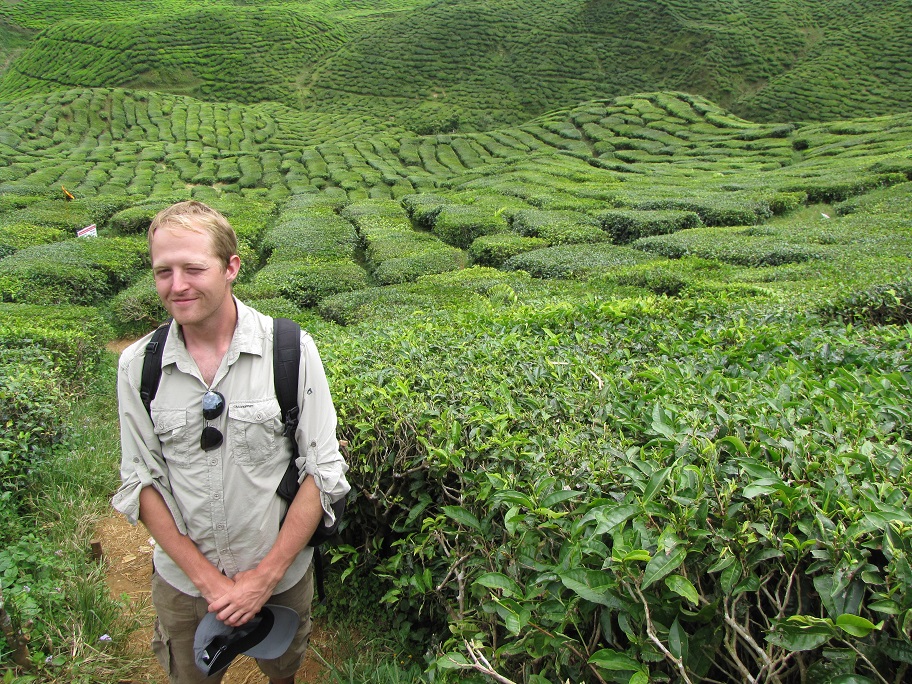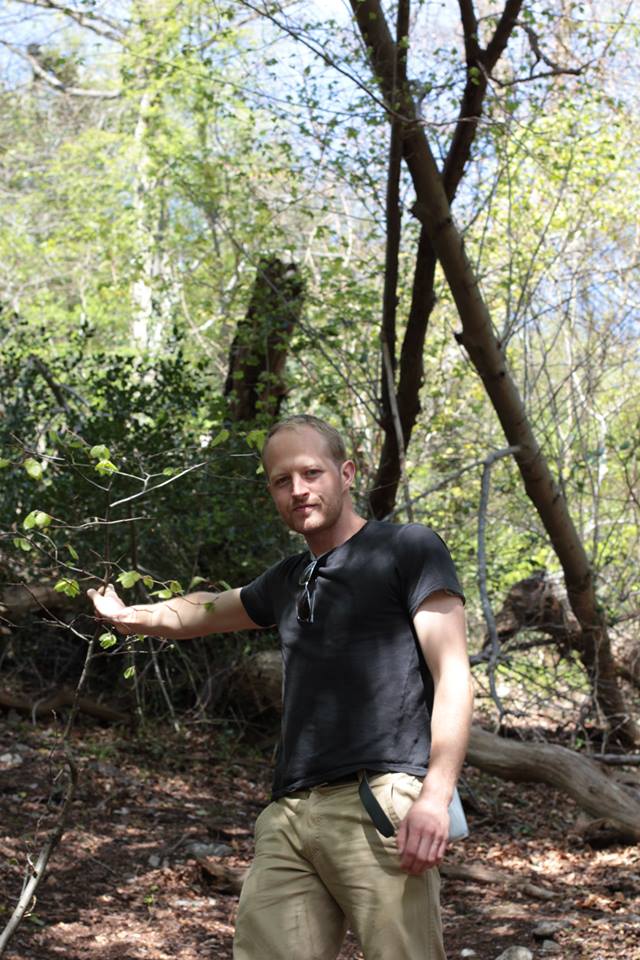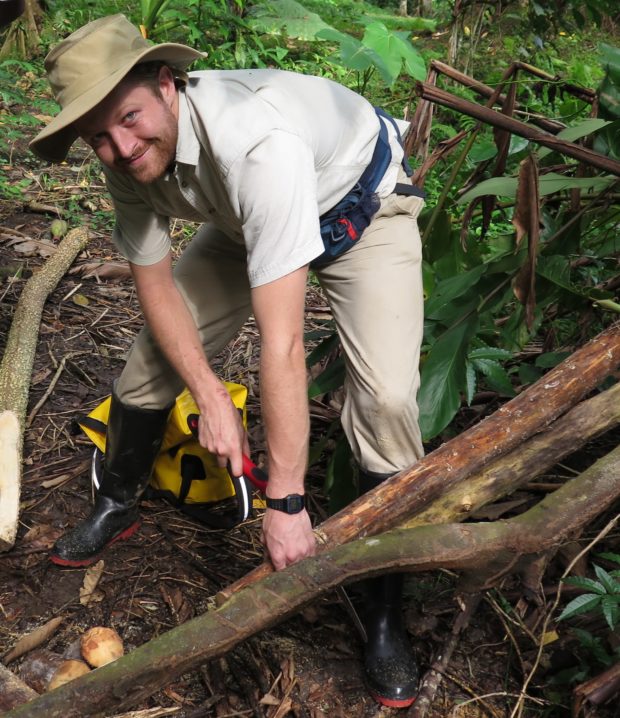School of Forest, Fisheries, and Geomatics Sciences, University of Florida
Contact
Research Summary
I am focused on improving our global capacity to deal with invasive bark and ambrosia beetles (Scolytinae) that are currently or may become pests. This is primarily though my passion for identification and taxonomy. I coordinate forest health projects and resolve taxonomic issues so that names of beetles are are meaningful and useful.
Within bark and ambrosia beetles, I am specialized on Cryphalini, a notorious group of tiny bark beetles, some of which are pests. I am resolving the higher classification, as well as collaborating with international researchers to resolve taxonomic issues among potential pest species. I also use phylogenetics and genomics to understand evolutionary questions about the bark beetles.
I am the principal identifier for the UF Forest Entomology Lab's identification service. See this link for more information. This work involves identification of bark and ambrosia beetles for stakeholders in Florida, UF extension agents, State monitoring schemes, and identification of potential emerging threats around the world. I have discovered several local species new to science, and three new introduced species in the US.
I also manage and curate the world’s largest cryo-preserved collection of Scolytinae, with over 20,000 vials containing 150,000 beetles represented from nearly every continent. In order to make this collection more easily available to other researchers and extension agents, I am currently spearheading a data management project which will comprehensively catalogue the collection.
Developing best practices for research involving bark and ambrosia beetles is an important part of my work. I enjoy striving for the correct use of taxonomy and vouchers. I am part of the Bark Beetle Mycobiome Research Coordination Network, a research coordination work assisting students and researchers. I also review manuscripts by UF graduate students as well as for scientific journals to make sure that research is done correctly.
Photography of bark beetles is both a hobby and a part of my job. Here at the UF Forest Entomology Lab we have developed a system using a compound microscope to photograph beetles, achieving resolutions beyond most museum set ups, using few modifications to existing lab infrastructure. The photos provide important information on how to identify the beetles.
Short Bio & Education
- 2019-present: Assistant Research Scientist. School of Forest Resources and Conservation, University of Florida
- 2017-2019: Postdoc. School of Forest Resources and Conservation, University of Florida
- 2013-2017: PhD. Resolving the Pygmy Borers (Curculionidae: Scolytinae: Cryphalini). School of Forest Resources and Conservation, University of Florida
- 2011-2012: Masters by Research in Entomology, Imperial College London.
- 2007-2010: BSc(Hons) Zoology. The University of Manchester, UK.
- Johnson, A. J. & Smith, S. M. Yet another new exotic ambrosia beetle (coleoptera: scolytinae: xyleborini) in Florida: Cyclorhipidion japonicum (Nobuchi, 1981). Coleopterists Bulletin. (2023)
- Hulcr, J., Gomez, D. F., & Johnson, A. J. Collecting and preserving bark and ambrosia beetles (Coleoptera: Curculionidae: Scolytinae & Platypodinae). Plos one, 17(4), e0265910. (2022).
- Araújo, J. P., Li, Y., Six, D., Rajchenberg, M., Smith, M .E., Johnson, A. J., Klepzig, K.D., Crous, P. W., Leal-Dutra, C.A., Skelton, J. and Adams, S. N. Diversity and Evolution of Entomocorticium (Russulales, Peniophoraceae), a Genus of Bark Beetle Mutualists Derived from Free-Living, Wood Rotting Peniophora. Journal of Fungi, 7(12), p.1043. (2021).
- Urvois, T., Perrier, C., Roques, A., Sauné, L., Courtin, C., Li, Y., Johnson, A. J., Hulcr, J., Auger-Rozenberg, M.A. and Kerdelhué, C. A first inference of the phylogeography of the worldwide invader Xylosandrus compactus. Journal of Pest Science, pp.1-15. (2021)
- Johnson, A. J., Honsberger, D. and Beaver, R. A. New records and taxonomic notes on Cryphalus Erichson, 1836 in Hawaiʻi (Coleoptera: Curculionidae: Scolytinae). Zootaxa, 4999(1), 41-57. (2021)
- Li, Y., Bateman, C., Skelton, J., Wang, B., Black, A., Huang, Y.T., Gonzalez, A., Jusino, M.A., Nolen, Z.J., Freeman, S., Mendel, Z., Chen, C.Y., Li, H. F., Kolařík, M., Knížek, M., Park, J. H., Sittichaya, W., Thai, P. H., Ito, S., Torii, M., Gao, L., Johnson, A. J., Lu, M., Sun, J., Zhang, Z., Adams, D. C., and Hulcr, J. Pre-invasion assessment of exotic bark beetle-vectored fungi to detect tree-killing pathogens. Phytopathology, (2021).
- Johnson, A. J. Another new exotic bark beetle in Florida: Ernoporus parvulus (Eggers, 1943)(Coleoptera: Curculionidae: Scolytinae),with additional taxonomic changes. Zootaxa 4991(1): 185-191. (2021)
- Li, Y., Johnson, A. J., Gao, L., Wu, C. and Hulcr, J. Two new invasive Ips bark beetles (Coleoptera: Curculionidae) in mainland China and their potential distribution in Asia. Pest Management Science. 77(9): 4000-4008 (2021)
- Hulcr, J., Gomez, D. F., Skelton, J, Johnson A. J., Adams, S., Li, Y., Jusino, M. A., and Smith, M. E. Invasion of an inconspicuous ambrosia beetle and fungus may affect wood decay in Southeastern North America. Biological Invasions 23(5), pp.1339-1347 (2021)
- Johnson, A. J., Li, Y., Mandelshtam, M. Y., Park, S., Lin, C. S., Gao, L., & Hulcr, J. East Asian Cryphalus Erichson (Curculionidae, Scolytinae): new species, new synonymy and redescriptions of species. ZooKeys, 995, 15. (2020).
- Hulcr, J., Barnes, I., De Beer, Z. W., Duong, T. A., Gazis, R., Johnson, A. J., Jusino, M. A., Kasson, M. T., Li, Y., Lynch, S. and Mayers, C.. Bark beetle mycobiome: collaboratively defined research priorities on a widespread insect-fungus symbiosis. Symbiosis. (2020)
- Li, Y., Johnson, A. J., Gao, L., Wu, C., and Hulcr, J. Two new invasive Ips bark beetles (Coleoptera: Curculionidae) in mainland China and their potential distribution in Asia. Pest Management Science (Accepted Nov. 2020)
- Sun, S, Wang, Z., Liu, A., Lai, S., Wang, J., Meng, Q., Gou, Y, Johnson A. J., and Li, Y. First Record of the Coffee Berry Borer, Hypothenemus hampei (Ferrari) (Coleoptera: Curculionidae: Scolytinae) on Hainan Island, China, The Coleopterists Bulletin 74(4), 710-713, (2020). https://doi.org/10.1649/0010-065X-74.4.710
- Gomez D. F., Johnson A. J., & Hulcr, J. Potential pest bark and ambrosia beetles from Cuba not present in the continental United States. Florida Entomologist (2020)
- Gomez D. F., Johnson A. J., Carton de Grammont P., Alfonso-Simonetti J., Montaigne J., Elizondo A. I., Muiño B. L., Ojeda D., Vidal J., Hulcr, J. New records of bark and ambrosia beetles (Coleoptera: Scolytinae) from Cuba with description of a new species. Florida Entomologist (2020)
- Rabaglia, R. J., Beaver, R. A., Johnson, A. J., Schmaedick, M. A., & Smith, S. M. The bark and ambrosia beetles (Coleoptera: Curculionidae: Scolytinae and Platypodinae) of American Samoa. Zootaxa, 4808(1), 171-195. (2020).
- Johnson, A. J., Hulcr, J., Cognato, A., Smith, S., Atkinson, T., Knizek, M., Park, S., Li, Y. Mandelstam, M, and Jordal, B. Revision of the bark beetle genera within the former Cryphalini (Curculionidae: Scolytinae). Insect Systematics and Diversity. 4:3 https://doi.org/10.1093/isd/ixaa002 (2020)
- Ruan, Y., Konstantinov, A.S., Shi, G., Tao, Y., Li, Y., Johnson, A.J., Luo, X., Zhang, X., Zhang, M., Wu, J. and Li, W., 2020. The jumping mechanism of flea beetles (Coleoptera, Chrysomelidae, Alticini), its application to bionics and preliminary design for a robotic jumping leg. ZooKeys, 915, p.87. (2020)
- Zheng, S., Johnson, A. J., Li, Y., Chu, C., Hulcr, J., (2019) Cryphalus eriobotryae sp. nov. (Coleoptera: Curculionidae: Scolytinae), a new insect pest of loquat Eriobotrya japonica in China. Insects, in press.
- Huang, Y.-T., Skelton, J., Johnson, A. J., Kolarik, M., Hulcr, J. (2019) Geosmithia species in southeastern USA and their affinity to beetle vectors and tree hosts. Fungal Ecology 39, 168-183.
- Skelton, J., Johnson, A. J., Jusino, M. A., Bateman, C. C., Li, Y., and Hulcr, J. (2019). A selective fungal transport organ (mycangium) maintains coarse phylogenetic congruence between fungus-farming ambrosia beetles and their symbionts. Proceedings of the Royal Society B, 286(1894), 20182127.
- Huang, Y. T., Skelton, J., Johnson, A. J., Kolařík, M., and Hulcr, J. (2019). Geosmithia species in southeastern USA and their affinity to beetle vectors and tree hosts. Fungal Ecology, 39, 168-183.
- Johnson, A. J., M. Knížek, T. H. Atkinson, B. H. Jordal, R. C. Ploetz, and J. Hulcr. 2017. Resolution of a Global Mango and Fig Pest Identity Crisis. Insect Systematics and Diversity 1:ixx010.
- Johnson, A. J., T. H. Atkinson, and J. Hulcr. 2016b. Two remarkable new species of Hypothenemus Westwood (Curculionidae: Scolytinae) from Southeastern USA. Zootaxa 4200: 417-425.
- Johnson, A. J., P. E. Kendra, J. Skelton, and J. Hulcr. 2016c. Species diversity, phenology, and temporal flight patterns of Hypothenemus pygmy borers (Coleoptera: Curculionidae: Scolytinae) in South Florida. Environmental entomology: nvw039.
- Huang, Y.-T., A. Lucky, Johnson, A. J., and J. Hulcr. 2016. Featured creatures: Hypothenemus eruditus Westwood, 1836 (Insecta: Coleoptera: Curculionidae: Scolytinae). Electronic Data Information Source (EDIS) University of Florida Institute of Food and Agricultural Sciences.
- Vega, F. E., F. Infante, and A. J. Johnson 2015. The genus Hypothenemus, with emphasis on H. hampei, the coffee berry borer. In Bark beetles: Biology and ecology of native and invasive species. Academic Press, San Diego, CA: 427-494.





